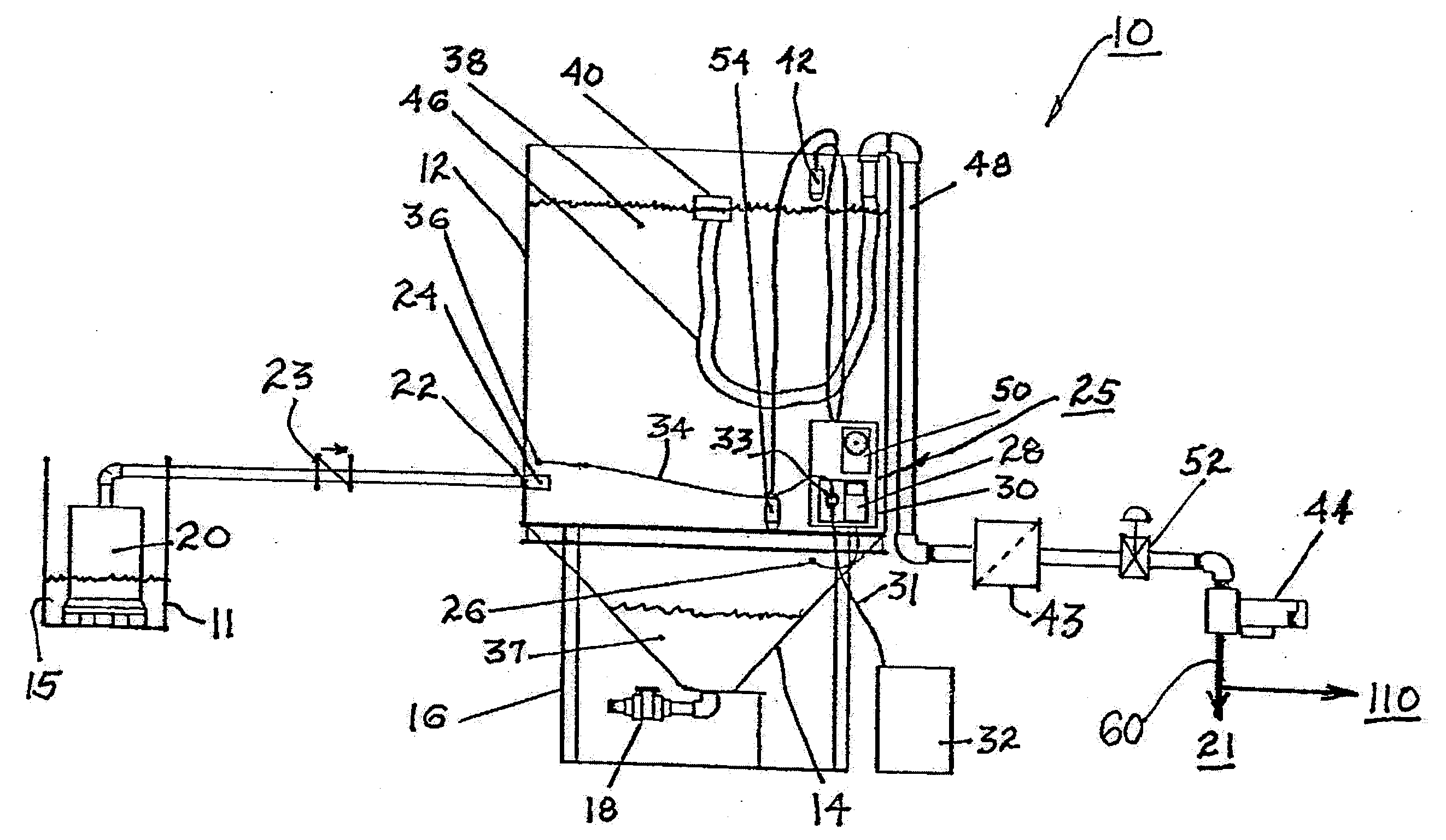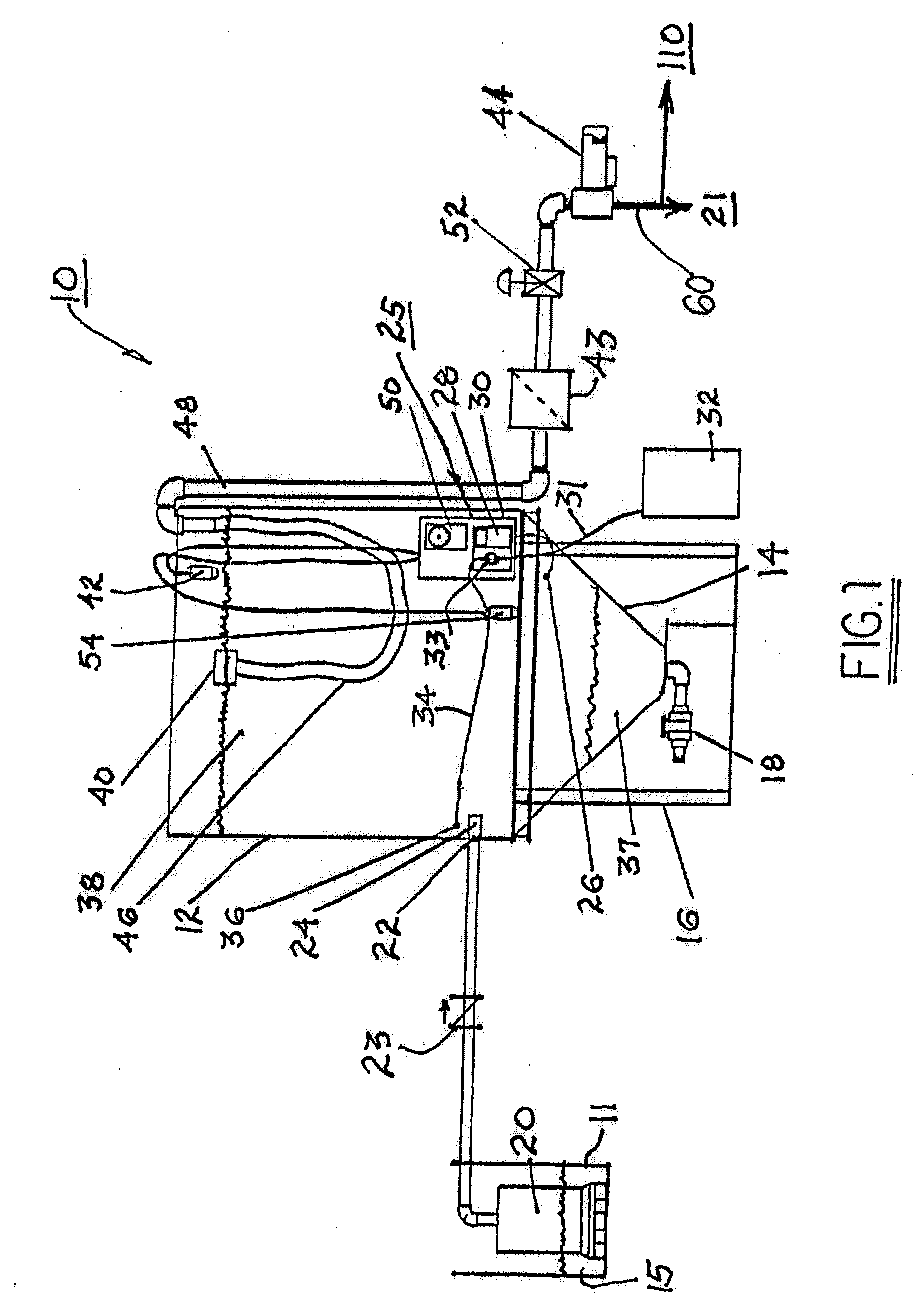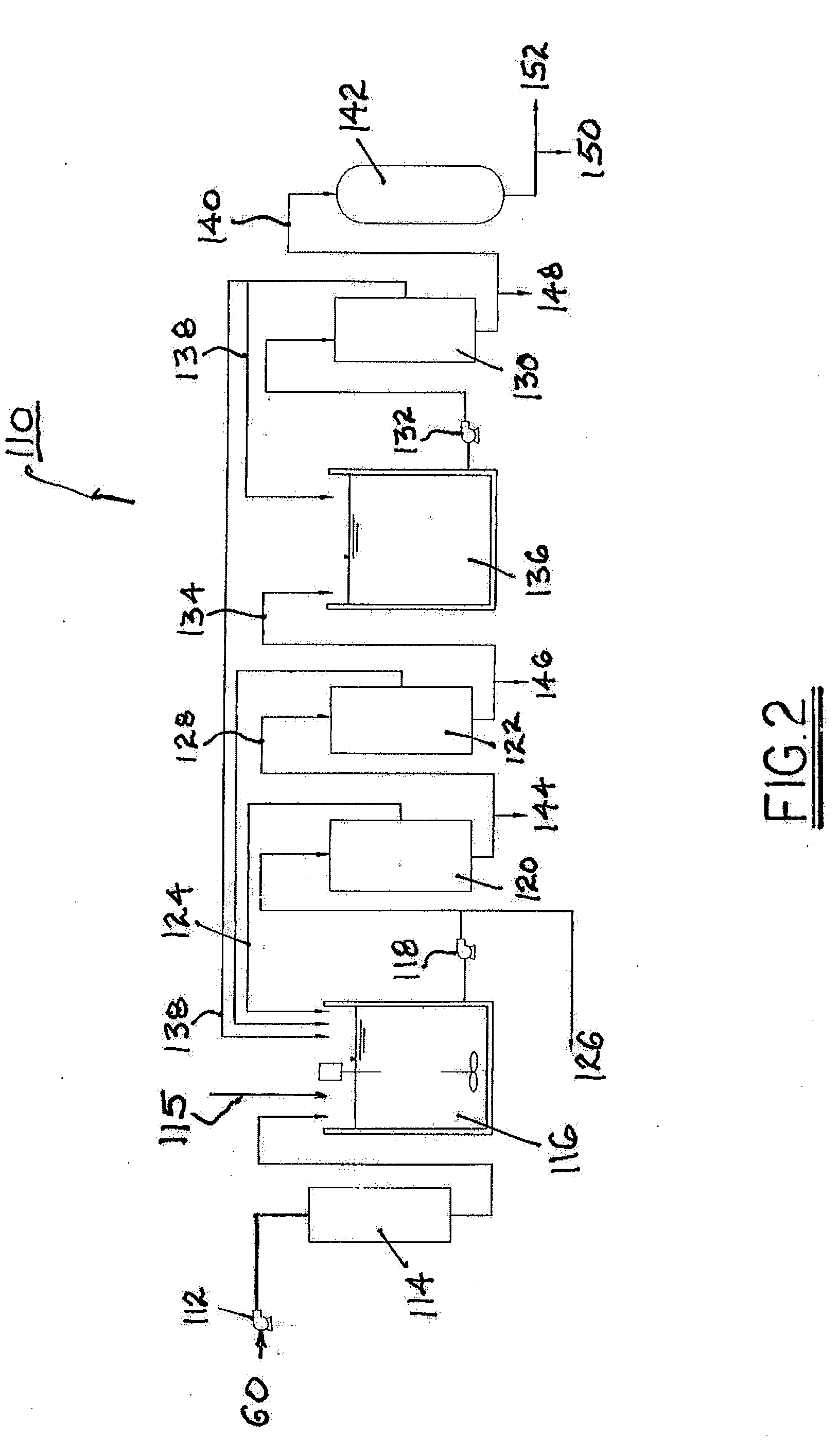System for processing food process waste water including purification and optional recycling of purified waste water
a technology for food processing and waste water, applied in the direction of water/sewage multi-stage treatment, separation process, membrane, etc., can solve the problems of large amount of waste water, etc., to achieve finer treatment levels and easy removal
- Summary
- Abstract
- Description
- Claims
- Application Information
AI Technical Summary
Benefits of technology
Problems solved by technology
Method used
Image
Examples
Embodiment Construction
[0029]Referring now to FIG. 1, a system 10 for treatment of food process waste water is shown. System 10 comprises an elevated tank 12, e.g., a cylindrical 1000 gallon tank formed, e.g., of polyethylene or polypropylene or stainless steel or other material able to tolerate caustic by-product of food processing. Tank 12 includes hopper bottom 14, preferably conical as shown, and is mounted on a stand 16 providing access to a solids outlet valve 18 in hopper bottom 14.
[0030]Preferably, tank 12 is sized to hold and dilute an entire spoiled batch (e.g., of beer or wine) and, additionally, one day or more of process discharge. This allows the user to treat and dilute spikes in process discharge constituents, e.g., BOD, TSS, and / or pH. Untreated food process waste water effluent (tank influent) 15 from a user's trench drain or sump 11 flows into tank 12 via a conventional sump pump 20 and backflow preventer check valve 23. System 10 is functionally positioned in the user's waste water eff...
PUM
| Property | Measurement | Unit |
|---|---|---|
| volume | aaaaa | aaaaa |
| cone angles | aaaaa | aaaaa |
| cone angles | aaaaa | aaaaa |
Abstract
Description
Claims
Application Information
 Login to View More
Login to View More - R&D
- Intellectual Property
- Life Sciences
- Materials
- Tech Scout
- Unparalleled Data Quality
- Higher Quality Content
- 60% Fewer Hallucinations
Browse by: Latest US Patents, China's latest patents, Technical Efficacy Thesaurus, Application Domain, Technology Topic, Popular Technical Reports.
© 2025 PatSnap. All rights reserved.Legal|Privacy policy|Modern Slavery Act Transparency Statement|Sitemap|About US| Contact US: help@patsnap.com



